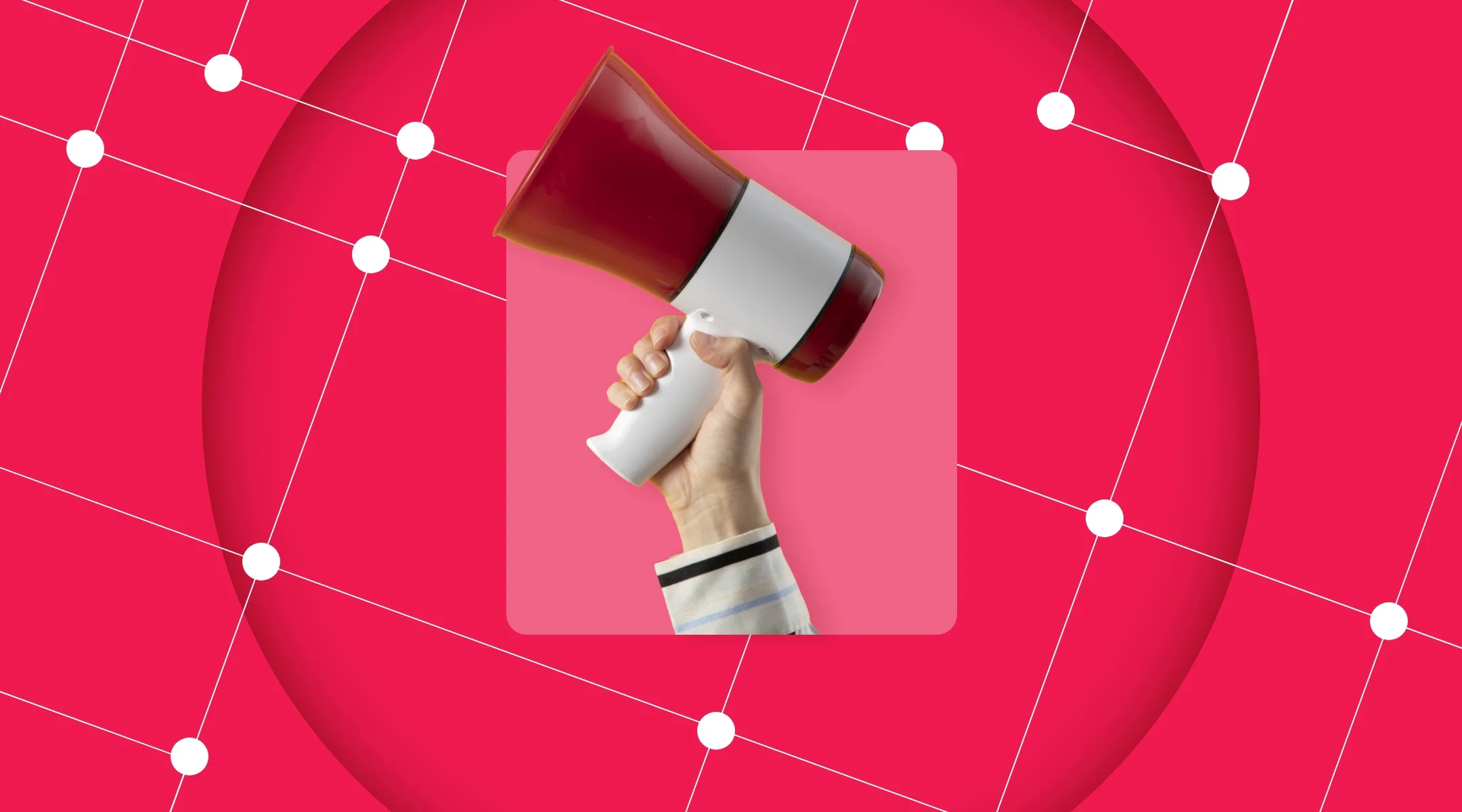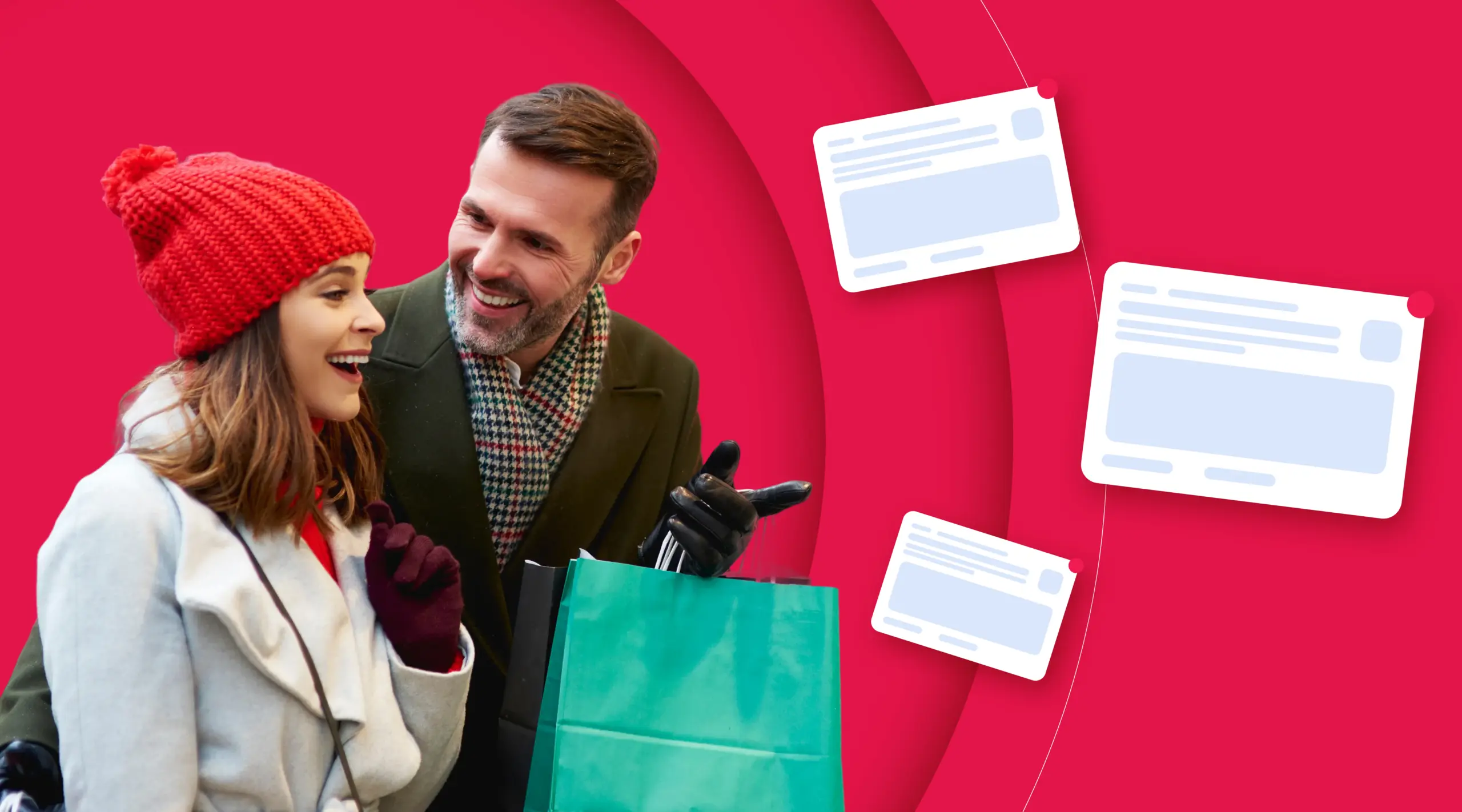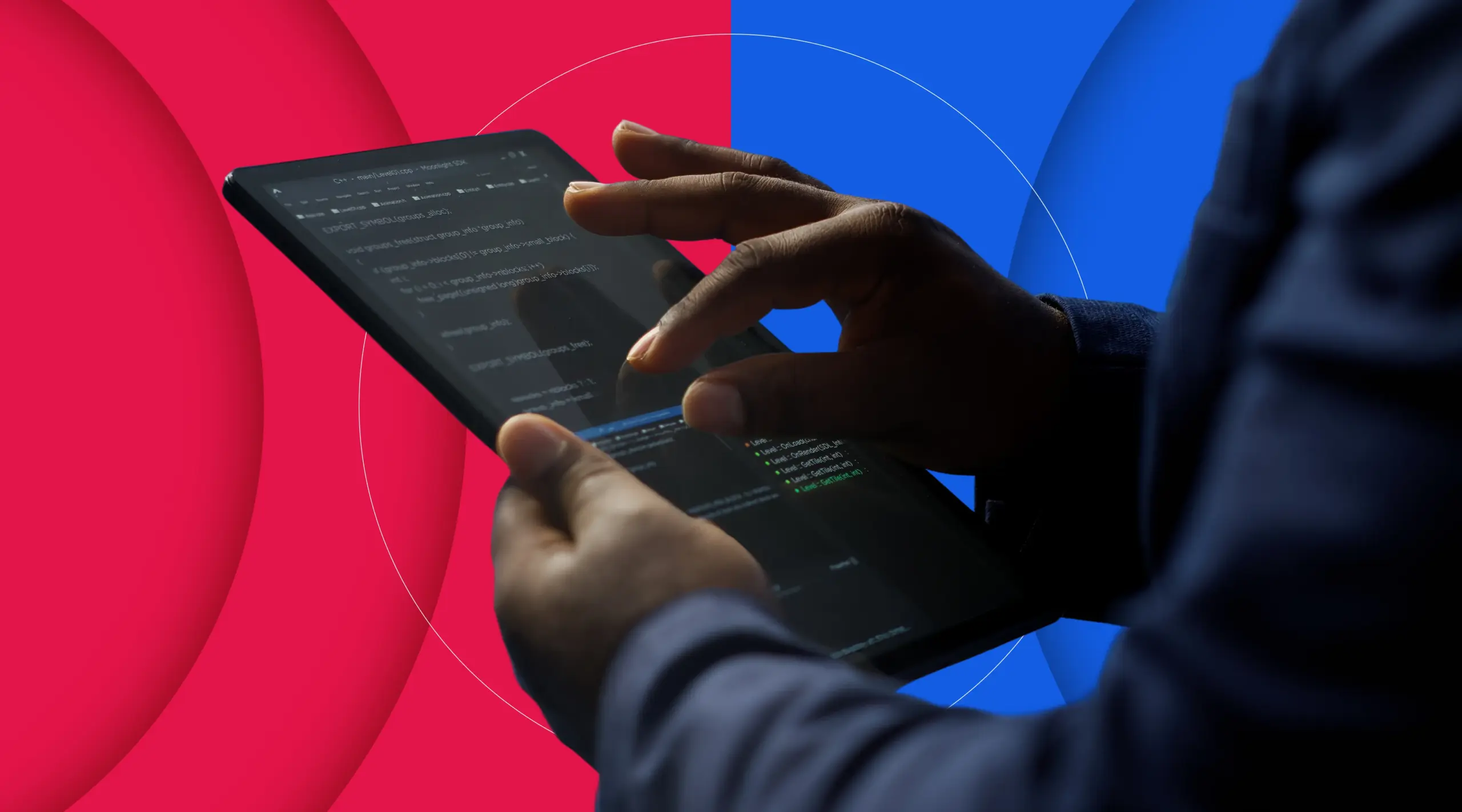
🕒 Updated on
What is programmatic advertising?
Programmatic advertising refers to any advertising activity in which the buying, implementation and delivery of campaigns are automated. In practice, this encompasses both real-time bidding (RTB) and more direct digital purchases, as long as they are carried out via technology platforms (on the demand-side, advertisers manage their bids via a DSP; on the supply-side, publishers display their inventories in an SSP).
The key idea is to use algorithms and data to make instantaneous media buying decisions, rather than manually placing buy orders. Historically introduced with Google Ads and the first ad-exchanges, programmatic advertising has established itself as an essential purchasing method for targeting an audience rather than a site, by efficiently exploiting user data (1st, 2nd, 3rd party).
Adrena’tips: in a nutshell, the programmatic process follows 5 steps: targeting → bidding → ad serving → performance measurement → price and path optimization, on both the demand-side and the supply-side.
- What is programmatic advertising?
- A sector enjoying exponential growth
- An ecosystem of intermediaries between advertisers and publishers
- Brand safety in programmatic advertising
- Ad fraud and its impact on advertisers' ROI
- The rise of ad blockers
- Trends 2025: towards a more responsible and diversified programmatic approach
- Towards more controlled, less intrusive advertising channels
- Web Push Notification: an innovative, non-intrusive format
- Take control of your digital strategy with Adrenalead
A sector enjoying exponential growth
The global digital advertising market is now largely dominated by programmatic advertising. Since the mid-2010s, the proportion of display ad spend channeled through automated channels has risen steadily, and today accounts for almost 90% of the total. By 2020, some 89% of digital display advertising spend was already programmatic, and this proportion continues to grow over the decade. In concrete terms, programmatic is capturing virtually all the recent growth in display: by 2025, it is estimated to account for 96.8% of new display budgets invested, compared with just 3.2% for non-automated purchases. This means that virtually every additional dollar spent on display advertising will go to programmatic channels. In absolute terms, programmatic spending is colossal: worldwide programmatic display was projected at $156.8 billion in 2024, and continues to grow by tens of billions every year.
Its dominance is due to three major advantages: targeting to impression, automation and real-time optimization. In concrete terms, advertising space is purchased by auction (often first-price), which allows prices (CPM/CPC) to vary according to competition and inventory quality, while performance (reach, CTR, ROAS) can be continuously monitored and improved.
This domination now extends to all digital formats and channels. Long confined to banners, programmatic now covers online video, mobile, native advertising, social media and even audio streaming. Above all, it is invading new media that used to be managed live: for example, advertising on connected television (CTV) is massively automated, with more than 90% of CTV spending set to be bought programmatically by 2025. Similarly, digital out-of-home (DOOH) and digital radio are gradually adopting programmatic places. Advertisers are enthusiastic about the reach, efficiency and flexibility offered by these automated purchases, which make it possible to optimize communication actions in real time.
An ecosystem of intermediaries between advertisers and publishers
The flip side of the « all-programmatic » boom is the extreme complexity of the advertising value chain. Between the advertiser and the Internet user to whom an ad is displayed, a multitude of technical players are involved: trading desks, DSP purchasing platforms, ad-exchange marketplaces, SSP sales platforms, data and measurement tools, etc. To visualize the entire programmatic chain, the Interactive Advertising Bureau published a diagram detailing each player in the automated advertising flow between buyers and sellers of space. This proliferation of intermediaries generates what is commonly referred to as a « ad tech tax »: a significant proportion of the advertising budget is dispersed in technical costs and margins throughout the circuit.
Recent studies have quantified this financial opacity. In 2023, the ANA (Association of National Advertisers) calculated that out of every €1,000 invested in programmatic, only €439 actually reaches the consumer in the form of visible space – the rest being captured by the various intermediaries and technical losses. In other words, more than half of an advertiser ‘s budget vanishes before being converted. Even if progress has been made (the 43.9% figure represents an improvement on the ~36% recorded a few years ago), the fact remains that programmatic advertising suffers from a serious lack of transparency and efficiency. Faced with this situation, some major advertisers have publicly expressed their frustration. For example, in 2023, Unilever announced that it would be reallocating up to 50% of its overall budget to other levers (content creators, social networks, etc.), thereby abandoning programmatic buying as insufficiently controlled. In the same vein, Procter & Gamble and JPMorgan Chase have already reduced their automated advertising investments in recent years to put pressure on the ecosystem and demand greater transparency.
Brand safety in programmatic advertising
Brand safety refers to the set of practices designed to ensure that a brand does not appear in an unfavorable context that could damage its image. However, in programmatic advertising, media buying is largely « blind buy » based: the advertiser buys targeted impressions, without always knowing precisely the sites/supports where its ads will be shown. This automation can lead to inappropriate placements – for example, a mainstream advertiser’s ad being displayed on a site with extreme, hateful or fake news content. In recent years, several scandals have exposed major brands whose banners were displayed alongside toxic content (terrorism, disinformation, etc.).
Despite filtering tools (keyword blacklists, sensitive categories, third-party verification solutions), there is no such thing as zero risk when buying in real time on the Internet. Brand Safety therefore remains a major concern for advertisers in 2024: 60% of them cite this as one of their main worries about programmatic. This fear is fuelled by reports showing that advertisers are wasting millions on low-quality placements that violate their brand safety standards. As a result, we’re seeing a return to more control: advertisers are increasingly favoring direct programmatic purchases (such as private deals, guaranteed programmatic) on hand-picked inventory, rather than blind open auctions. Many are building up whitelists of verified publisher sites on which they agree to appear, and are stepping up their verification requirements (independent double-checking of broadcast locations). The aim is to reconcile the power of programmatic advertising with control over the distribution environment, in order to protect the brand’s image.
Adrena’tips: « blind buy » does not always allow for precise control of the spaces where ads are displayed. To reduce the risk of inappropriate environments, implement a strict process: whitelists, sensitive category criteria, third-party verification tools and private deals guarantee a controlled context.
Ad fraud and its impact on advertisers’ ROI
The second major pitfall of programmatic advertising is ad fraud, which proliferates in automated environments. It is estimated that a significant proportion of online advertising traffic is generated by bots, fake sites or other malicious practices aimed at diverting marketing budgets. The figures are staggering: in 2023, around 22% of all digital ad spending was attributed to fraud, representing a loss of $84 billion for advertisers. On « open web » programmatic inventory alone (excluding walled gardens), nearly a quarter of paid impressions are said to be served on low-quality or outright fraudulent sites. Some platforms and ad networks even have exorbitant rates of invalid traffic, with fraudulent activity approaching 45-50%. In other words, on some campaigns, almost every second visual is seen by a bot rather than a human!
This scourge has direct consequences for e-tailers and other advertisers: it’s a dry loss « » of budget. For example, an advertiser paying by CPM (cost per thousand impressions) will see part of its budget consumed by displaying ads to bots – with no chance of reaching a real customer. Not only does this undermine the ROI of actions (budget spent unnecessarily, zero conversions), but it also contributes to the general poor image of programmatic advertising. Many advertisers are becoming more wary of automated buying, as they realize that ROI is not being achieved because of these frauds. The advertising industry is organizing itself to combat this phenomenon ( ads.txt, app-ads.txt initiatives, anti-IVT filters, groups like TAG for transparency, etc.), but the fight is ongoing as fraudsters redouble their inventiveness (increasingly sophisticated bots, mass-generated « made for ads » sites, fake clicks, URL spoofing, etc.). For advertisers, it is crucial to carefully monitor the quality of their programmatic campaigns (via brand safety/fraud providers, for example) in order to minimize these invisible losses.
The rise of ad blockers
These distribution challenges are compounded by an external factor: the growing rejection of advertising by a segment of the public, manifested in the massive adoption of ad blockers. Internet users, saturated with intrusive banners and pop-ups, are installing these browser extensions in large numbers to filter out ads during their browsing (a visual or a video). In France, it was estimated as early as 2019 that around a third of Internet users were using an ad blocker on their connected devices. This proportion is mirrored worldwide: at the start of 2024, around 31.5% of Internet users worldwide block advertising at least occasionally. In other words, almost one in three Internet users will never see classic programmatic banner or video ads, because they are simply filtered out by their software.
This phenomenon has two consequences. Firstly, it mechanically reduces the useful audience for online campaigns (we’re talking about 30% fewer impressions served to humans). On the other hand, it reflects a real problem of user experience: too much advertising kills advertising, and a significant proportion of the public considers current formats to be intrusive or harmful, to the point of blocking them altogether. Publishers try to react by detecting ad blockers or restricting access to their content for ad-blocking users, but most equipped Internet users remain impervious to traditional advertising messages. For advertisers, the widespread use of ad blockers means that a significant portion of their target audience has become unreachable via traditional display channels. This is a further incentive to reinvent advertising approaches with more acceptable, non-intrusive formats, based on explicit user consent.
Trends 2025: towards a more responsible and diversified programmatic approach
Faced with these limitations (brand safety, fraud, ad blocking), the advertising ecosystem is changing. Several key trends can be identified for 2025:
- Privacy and the disappearance of third-party cookies: the industry is actively preparing for the cookieless era. Google has announced the gradual end of third-party cookies on Chrome (after several postponements, total elimination is now not expected before 2026). This will call into question some of today’s programmatic targeting. In response, advertisers and publishers are accelerating their first-party data strategies (proprietary data consented by their users) and exploring alternatives such as contextual targeting or privacy-friendly anonymized identifiers. Over 76% of advertising organizations say they are implementing first-party data strategies, and more than half cite this as the most promising solution for the future. The idea is to reduce reliance on third-party data and realign digital advertising with an RGPD-compliant framework centered on consent and contextual relevance.
- Transparency and supply-path optimization: aware of the « waste » in the programmatic supply chain, the industry is seeing the emergence of initiatives to simplify buying paths. Advertisers are tending to reduce the number of SSP partners per campaign, signing direct agreements with the major players and demanding quality audits of their inventories. A year after the ANA’s shock report (revealing ~15% of spend untraceable in the channel), less than half of buyers had actually undertaken to audit their inventory or contract directly to clean up the market. Nevertheless, pressure is mounting to clean up the opaque “ecosystem”, with the support of organizations such as Alliance Digitale in France and the WFA worldwide. The widespread adoption of ads.txt / sellers.json files, the Trust Token protocol and the development of blockchain traceability tools are among the avenues being pursued to move towards more reliable and traceable programmatic.
- Rise of walled gardens and retail: paradoxically, while the whole system is trying to reform itself, advertisers continue to favor closed environments (Google, Meta, Amazon, etc.) where reach and ease of purchase are paramount. WARC predicts that five players will capture more than half of global advertising spend by 2024. Moreover, a majority of advertisers claim to invest most of their programmatic budget outside the internet (in social, search, retail… where brand safety/fraud issues are perceived as less of a concern). Retail – advertising on the websites/apps of major e-retailers – is developing strongly, often using programmatic technologies (dedicated DSPs, private marketplaces) while offering a more controlled environment for brands. This evolution reflects a search for compromise: taking advantage of automation and data, but in more secure contexts.
- New formats and environmental responsibility: last but not least, programmatic advertising in 2025 will explore new territories, such as responsible advertising. The question of the ecological sustainability of digital advertising is beginning to emerge: one study estimates that the programmatic ecosystem generates over 215,000 tonnes of CO₂ per month in five major economies, via the energy consumption of automated servers and auctions. For now, 59% of companies admit to not prioritizing the reduction of these emissions in their campaigns. However, some agencies and advertisers are beginning to measure the carbon cost of their programmatic campaigns and optimize their choices (lightweight formats, limiting unnecessary server calls, etc.) to combine marketing efficiency with lower environmental impact. This trend could gain in importance, encouraged by initiatives such as climate contracts in France, which call for more sober advertising.
In short, programmatic advertising remains an essential and fast-growing lever, but it is entering a new phase of maturity where quality takes precedence over quantity. Market players are seeking to preserve its strengths (precise targeting, automation on a massive scale, AI optimization, etc.) while correcting its drawbacks (fraud, opacity, intrusion). Against this backdrop, they are also turning to alternative advertising formats to diversify their strategy.
Towards more controlled, less intrusive advertising channels
All these issues combined (risky distribution context, fraud, capacity reduced by ad blockers, end of cookies, etc.) are driving advertisers to explore new digital communication levers. The challenge is to find less intrusive formats, based on user consent, and enabling the brand to regain control of its message as well as its audience. We are seeing growing interest in content marketing, partnerships with creators/influencers (as illustrated by the Unilever initiative mentioned above), and the development of proprietary communities (newsletters, opt-in SMS, etc.).
Among these alternatives, one format in particular is emerging as a solution to the ills of programmatic: Web Push Notification (push notification). This innovative channel offers advertisers the opportunity to address their audience directly, in a targeted and respectful way, without using traditional advertising spaces. Let’s take a look at what it consists of and how it responds point by point to the challenges mentioned above.
Web Push Notification: an innovative, non-intrusive format
Web Push Notification is a short message sent directly by an internet user’s browser, which appears on their screen (mobile or desktop) instantly—even when they’re not on the brand’s site. This format offers several major advantages for advertisers and agencies, providing concrete answers to common issues with programmatic advertising:
- Opt-in delivery and GDPR-friendly: unlike classic banners that impose themselves during browsing, notifications can only be sent to users who have explicitly consented to receive them from third parties. The opt-in happens via the browser, which displays a clear authorization request and acts as a trusted intermediary. It is intrinsically “privacy by design”: no personal data is required (no email, no phone number, just consent managed by the browser), and the user can unsubscribe at any time with a single click. Broadly compatible with all modern browsers, pushes potentially reach up to 85% of internet users, while strictly complying with GDPR consent rules. Control is returned to the user to choose whether (or not) to receive communications from sites they trust—boosting acceptance and engagement as a result.
- Disintermediated delivery and total brand safety: the push delivery model is unique. It’s the browser itself that “pushes” the message to the subscribed user, without needing to buy an ad impression on any website. For advertisers, this signals the end of brand-safety concerns: your message won’t appear next to inappropriate content; it’s displayed in an isolated manner on the user’s device. You retain 100% control over the sending criteria (the user’s known behavior on your own site, areas of interest, etc.), ensuring ultra-relevant messaging. In short, this technology combines the precise targeting of programmatic with zero risk of placement on questionable sites—a relief for brand image.
- No room for fraud: again, because the notification is sent by the browser to a real user (who has consented), it’s impossible to “cheat” with fake clicks or fake impressions. There’s no hidden inventory, no bot armies “simulating” receipt of the notification—each send necessarily reaches a human (or at worst, doesn’t display if the device is offline). This removes fraud issues that plague display programmatic. The advertiser pays to reach real people who have accepted to receive offers from various advertisers. Return on investment is directly measurable (click-through rates, conversion rates) without fearing that half the budget vanishes into thin air. In a sense, these notifications reintroduce total transparency: you know exactly how many people were reached and how many interactions you can follow.
- Not blocked by ad blockers: a decisive advantage is that it bypasses ad blockers. Traditional blockers filter out ad elements built into pages, but they can’t block the browser’s native notification system (since it’s built into the OS). As soon as the user has consented to receive notifications, these will be delivered whether they’re on or off your site and even if they run an ad blocker on their browser. You can therefore recapture part of the internet audience that has moved away because of blockers: even a user who refuses display ads may accept notifications from their favorite sites. It’s a powerful channel for re-engaging users who are invisible to traditional banners.
In summary, this new tool emerges as an innovative, respectful, and effective lever for delivering programmatic announcements. It allows you to proactively reach people, without depending on ad-tech giants or cookie layers, your own audience, or your own first-party subscribers who have opted in. The message arrives at the right moment (the user receives the notification in real time, even if they’re not on the site) and in the right place (on their screen, even on the device’s lock screen), making it a powerful tool for generating qualified traffic to your site, promoting your offers, recovering abandoned carts, etc. Moreover, the format is lightweight and unobtrusive for the user experience: the internet user chooses to subscribe, can close the notification or click on it based on interest, and isn’t disturbed during normal browsing (since the notification appears outside the active browser window).
Adrena’tips: the advantages of Web Push = opt-in, brand safety, measurable performance, no fraud.
Take control of your digital strategy with Adrenalead
At Adrenalead, we’re convinced that it’s time to realign the interests of brands, web users and publishers around win-win solutions. With this in mind, we have launched the first Web Push Notification customer activation platform, with a unique audience extension offer. In concrete terms, our solution enables brands to rapidly build up a network of web users who subscribe to their notifications, and to distribute their ads to non-subscribing web users, via a collective of partner publisher sites. In this way, advertisers regain total control over their advertising distribution: they communicate directly with their target audience, within a secure framework (carefully selected affinity sites and off-site display).
By recreating a direct link with your customers and prospects – without opaque intermediaries or risky bidding – you optimize every euro invested and control your brand image from start to finish. No more cookies and blind « purchases »: you activate your leads via a channel they’ve chosen, and build your own proprietary media. It’s a paradigm shift that restores meaning to your advertising spend, focusing on loyalty and customer knowledge.
What if you were to take back control of your digital strategy and advertising in 2025? Between effective but perfectible traditional programmatic and new, more virtuous formats such as Web Push Notification, it’s possible to build a powerful , transparent digital mix. Don’t let today’s challenges hold back your online growth: solutions exist to control your audience and optimize your advertising investments. Let’s talk about it together: discover how Web Push Notification can fit into your ecosystem and boost your e-commerce performance, in a controlled and customer-friendly way.
In 2025, more than ever, combining advertising innovation and user experience will be the key to successful and sustainable digital marketing – and we’re here to help.



